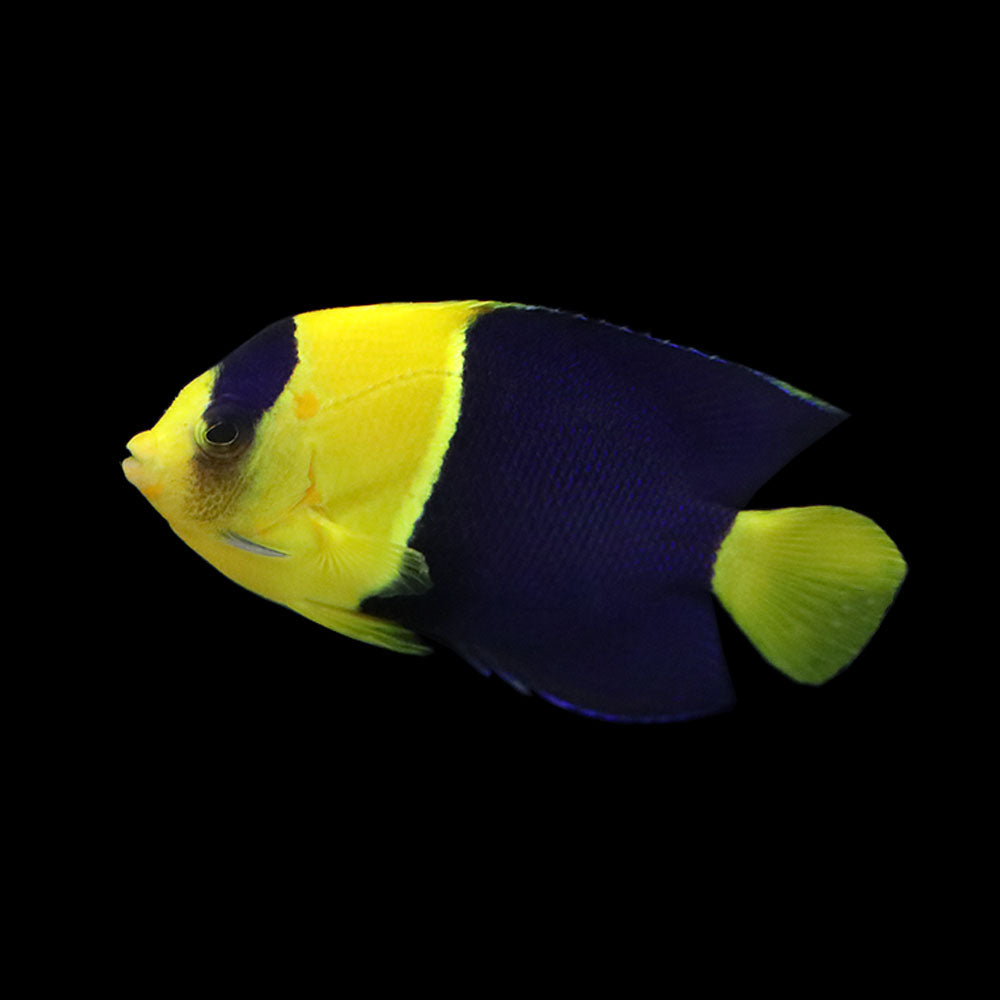AQUARIUM ARTS
Bicolor Angelfish (Centropyge bicolor)
Bicolor Angelfish (Centropyge bicolor)
Couldn't load pickup availability
Bicolor Angelfish (Centropyge bicolor)
Description:
Behavior: The Bicolor Angelfish, also known as the Oriole Angelfish, is a bold and active species known for its inquisitive nature. While generally peaceful, it can exhibit territorial behavior towards other angelfish, especially in smaller aquariums. Providing plenty of hiding spots and a well-structured environment can help minimize aggression.
Color: The Bicolor Angelfish is easily recognizable by its striking two-tone coloration. The front half of its body, including the head and dorsal fin, is a vibrant yellow, while the rear half, including the tail, is a deep blue. This sharp contrast in colors makes the Bicolor Angelfish a visually appealing addition to any marine aquarium.
Diet: Bicolor Angelfish are omnivores and thrive on a varied diet. They should be fed a mix of high-quality angelfish preparations, marine algae, and meaty foods like mysis shrimp, brine shrimp, and finely chopped seafood. Regular feedings of sponges and tunicates will help mimic their natural diet and promote optimal health and coloration.
Tankmates: Bicolor Angelfish can be kept with a variety of other marine fish, including tangs, wrasses, and clownfish. This fish can be kept with other angelfish of the same genus. It is advisable to introduce them all at the same time to an appropriately sized aquarium, usually 5 feet or longer. Ensure that algae and other food is not lacking to minimize aggression problems.
Reef Aquarium Compatibility: Bicolor Angelfish are considered reef-safe with caution. They may occasionally nip at soft corals and sessile invertebrates. Monitoring their behavior and ensuring they are well-fed can help minimize the risk of unwanted coral nipping.
Max Size: Bicolor Angelfish typically grow to about 6 inches (15 cm) in length. While they can be initially housed in a 30-gallon aquarium, they will require a larger tank as they grow. A spacious aquarium of at least 70 gallons is recommended for adult Bicolor Angelfish to thrive and maintain good water quality.
Origin: Bicolor Angelfish are commonly found in the Indo-Pacific region, including the waters around Fiji, Tonga, and the Great Barrier Reef.
Sexual Dimorphism: Bicolor Angelfish do not exhibit significant sexual dimorphism, making it difficult to distinguish males from females based solely on appearance.
Interesting Facts:
- The Bicolor Angelfish is known for its hardiness and adaptability, making it a popular choice for beginner and experienced aquarists alike.
- In the wild, they are often found in pairs or small groups, inhabiting coral-rich lagoons and outer reef slopes at depths ranging from 3 to 25 meters.
- Bicolor Angelfish are known to produce grunting sounds, which are believed to be a form of communication, particularly during breeding or territorial disputes.
- They are known for their longevity and can live for several years in captivity with proper care and a well-maintained environment.
Disclaimer: Aquarium Arts cannot guarantee compatibility with your current fish or the fish you buy and cannot be held liable for fish lost due to aggression.
Introduce the vibrant Bicolor Angelfish to your aquarium and enjoy its bold colors and dynamic presence, adding both beauty and lively activity to your underwater world.
Share


